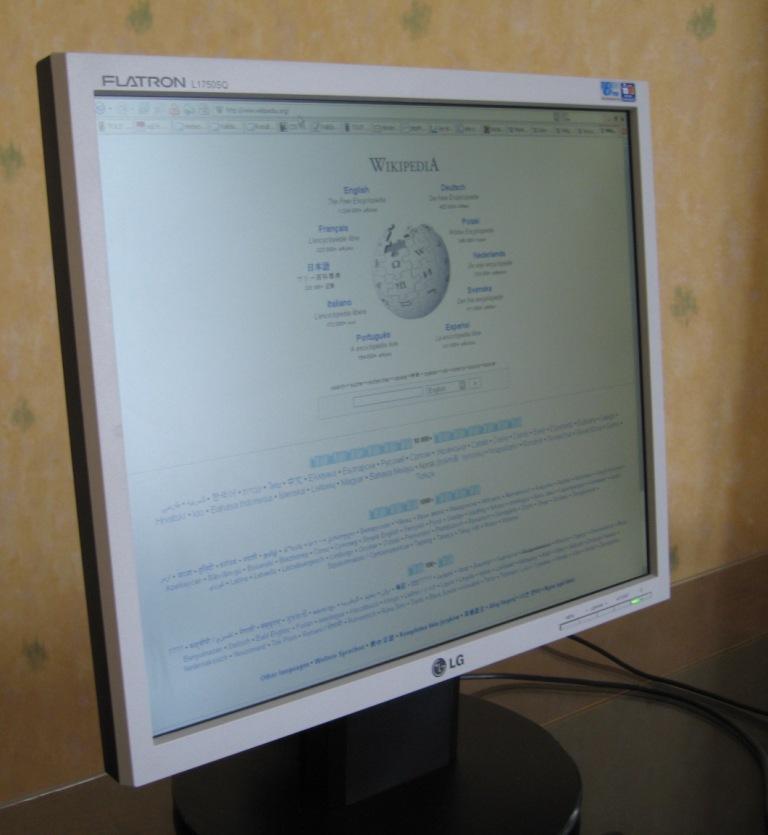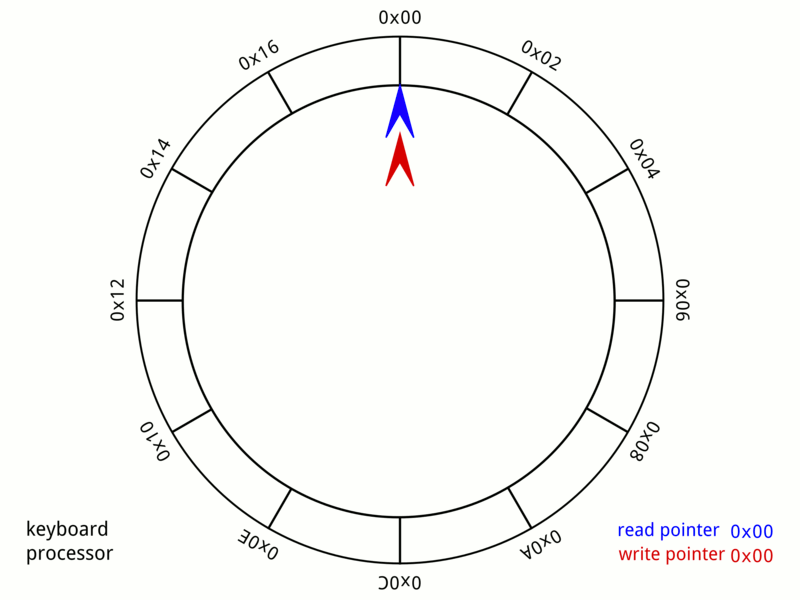|
Variable Length Buffer
In telecommunications, a variable length buffer or elastic buffer is a buffer into which data may be entered at one rate and removed at another rate without changing the data sequence. Most first-in first-out (FIFO) storage devices are variable-length buffers in that the input rate may be variable while the output rate is constant or the output rate may be variable while the input rate is constant. Various clocking and control systems are used to allow control of underflow or overflow conditions. See also *Buffer (telecommunication) *Circular buffer In computer science, a circular buffer, circular queue, cyclic buffer or ring buffer is a data structure that uses a single, fixed-size buffer as if it were connected end-to-end. This structure lends itself easily to buffering data streams. The ... References {{Reflist Synchronization Computer memory ... [...More Info...] [...Related Items...] OR: [Wikipedia] [Google] [Baidu] [Amazon] |
Telecommunications
Telecommunication, often used in its plural form or abbreviated as telecom, is the transmission of information over a distance using electronic means, typically through cables, radio waves, or other communication technologies. These means of transmission may be divided into communication channels for multiplexing, allowing for a single medium to transmit several concurrent Session (computer science), communication sessions. Long-distance technologies invented during the 20th and 21st centuries generally use electric power, and include the electrical telegraph, telegraph, telephone, television, and radio. Early telecommunication networks used metal wires as the medium for transmitting signals. These networks were used for telegraphy and telephony for many decades. In the first decade of the 20th century, a revolution in wireless communication began with breakthroughs including those made in radio communications by Guglielmo Marconi, who won the 1909 Nobel Prize in Physics. Othe ... [...More Info...] [...Related Items...] OR: [Wikipedia] [Google] [Baidu] [Amazon] |
Buffer (telecommunication)
In computer science, a data buffer (or just buffer) is a region of memory used to store data temporarily while it is being moved from one place to another. Typically, the data is stored in a buffer as it is retrieved from an input device (such as a microphone) or just before it is sent to an output device (such as speakers); however, a buffer may be used when data is moved between process (computing), processes within a computer, comparable to buffers in telecommunication. Buffers can be implemented in a fixed memory location in hardware or by using a virtual data buffer in software that points at a location in the physical memory. In all cases, the data stored in a data buffer is stored on a computer data storage, physical storage medium. The majority of buffers are implemented in software, which typically use Random-access memory, RAM to store temporary data because of its much faster access time when compared with hard disk drives. Buffers are typically used when there is a dif ... [...More Info...] [...Related Items...] OR: [Wikipedia] [Google] [Baidu] [Amazon] |
Data
Data ( , ) are a collection of discrete or continuous values that convey information, describing the quantity, quality, fact, statistics, other basic units of meaning, or simply sequences of symbols that may be further interpreted formally. A datum is an individual value in a collection of data. Data are usually organized into structures such as tables that provide additional context and meaning, and may themselves be used as data in larger structures. Data may be used as variables in a computational process. Data may represent abstract ideas or concrete measurements. Data are commonly used in scientific research, economics, and virtually every other form of human organizational activity. Examples of data sets include price indices (such as the consumer price index), unemployment rates, literacy rates, and census data. In this context, data represent the raw facts and figures from which useful information can be extracted. Data are collected using technique ... [...More Info...] [...Related Items...] OR: [Wikipedia] [Google] [Baidu] [Amazon] |
Sequence
In mathematics, a sequence is an enumerated collection of objects in which repetitions are allowed and order matters. Like a set, it contains members (also called ''elements'', or ''terms''). The number of elements (possibly infinite) is called the ''length'' of the sequence. Unlike a set, the same elements can appear multiple times at different positions in a sequence, and unlike a set, the order does matter. Formally, a sequence can be defined as a function from natural numbers (the positions of elements in the sequence) to the elements at each position. The notion of a sequence can be generalized to an indexed family, defined as a function from an ''arbitrary'' index set. For example, (M, A, R, Y) is a sequence of letters with the letter "M" first and "Y" last. This sequence differs from (A, R, M, Y). Also, the sequence (1, 1, 2, 3, 5, 8), which contains the number 1 at two different positions, is a valid sequence. Sequences can be '' finite'', as in these examples, or '' ... [...More Info...] [...Related Items...] OR: [Wikipedia] [Google] [Baidu] [Amazon] |
FIFO (computing And Electronics)
Representation of a FIFO queue In computing and in systems theory, first in, first out (the first in is the first out), acronymized as FIFO, is a method for organizing the manipulation of a data structure (often, specifically a data buffer) where the oldest (first) entry, or "head" of the queue, is processed first. Such processing is analogous to servicing people in a queue area on a first-come, first-served (FCFS) basis, i.e. in the same sequence in which they arrive at the queue's tail. FCFS is also the jargon term for the FIFO operating system scheduling algorithm, which gives every process central processing unit (CPU) time in the order in which it is demanded. FIFO's opposite is LIFO, last-in-first-out, where the youngest entry or "top of the stack" is processed first. A priority queue is neither FIFO or LIFO but may adopt similar behaviour temporarily or by default. Queueing theory encompasses these methods for processing data structures, as well as interactions be ... [...More Info...] [...Related Items...] OR: [Wikipedia] [Google] [Baidu] [Amazon] |
Data Storage Device
Data ( , ) are a collection of discrete or continuous values that convey information, describing the quantity, quality, fact, statistics, other basic units of meaning, or simply sequences of symbols that may be further interpreted formally. A datum is an individual value in a collection of data. Data are usually organized into structures such as tables that provide additional context and meaning, and may themselves be used as data in larger structures. Data may be used as variables in a computational process. Data may represent abstract ideas or concrete measurements. Data are commonly used in scientific research, economics, and virtually every other form of human organizational activity. Examples of data sets include price indices (such as the consumer price index), unemployment rates, literacy rates, and census data. In this context, data represent the raw facts and figures from which useful information can be extracted. Data are collected using techniques ... [...More Info...] [...Related Items...] OR: [Wikipedia] [Google] [Baidu] [Amazon] |
Output (computing)
An output device is any piece of computer hardware that converts information or data into a human-perceptible form or, historically, into a physical machine-readable form for use with other non-computerized equipment. It can be text, graphics, tactile, audio, or video. Examples include Computer monitor, monitors, Printer (computing), printers and sound cards. In an industrial setting, output devices also include "printers" for paper tape and punched cards, especially where the tape or cards are subsequently used to control industrial equipment, such as an industrial loom with electrical robotics which is not fully computerized Visual A ''display device'' is the most common form of output device which presents output visually on computer screen. The output appears temporarily on the screen and can easily be altered or erased. With all-in-one PCs, notebook computers, hand held PCs and other devices; the term display screen is used for the display device. The display devices a ... [...More Info...] [...Related Items...] OR: [Wikipedia] [Google] [Baidu] [Amazon] |
Buffer Underflow
In computing, buffer underrun or buffer underflow is a state occurring when a buffer used for communicating between two devices or processes is fed with data at a lower speed than the data is being read from it. This requires the program reading from the buffer to pause its processing while the buffer refills. Having to deal with such situations can cause undesired and sometimes serious side effects because the data being buffered is often not suited for stop-start access of this kind. In terms of concurrent programming, a buffer underrun can be considered a form of resource starvation. The term as defined above is distinct from buffer overflow, a condition where a portion of memory forms a buffer of a fixed size yet is filled with more than that amount of data, thus overwriting memory locations outside of the allocated chunk. However, buffer underrun and underflow are also sometimes used to mean buffer underwrite, where a program is tricked into writing data into memory loca ... [...More Info...] [...Related Items...] OR: [Wikipedia] [Google] [Baidu] [Amazon] |
Circular Buffer
In computer science, a circular buffer, circular queue, cyclic buffer or ring buffer is a data structure that uses a single, fixed-size buffer as if it were connected end-to-end. This structure lends itself easily to buffering data streams. There were early circular buffer implementations in hardware. Overview A circular buffer first starts out empty and has a set length. In the diagram below is a 7-element buffer: : Assume that 1 is written in the center of a circular buffer (the exact starting location is not important in a circular buffer): : Then assume that two more elements are added to the circular buffer — 2 & 3 — which get put after 1: : If two elements are removed, the two oldest values inside of the circular buffer would be removed. Circular buffers use FIFO ('' first in, first out'') logic. In the example, 1 & 2 were the first to enter the circular buffer, they are the first to be removed, leaving 3 inside of the buffer. : If the buffer has 7 e ... [...More Info...] [...Related Items...] OR: [Wikipedia] [Google] [Baidu] [Amazon] |
Synchronization
Synchronization is the coordination of events to operate a system in unison. For example, the Conductor (music), conductor of an orchestra keeps the orchestra synchronized or ''in time''. Systems that operate with all parts in synchrony are said to be synchronous or ''in sync''—and those that are not are ''Asynchronous system, asynchronous''. Today, time synchronization can occur between systems around the world through satellite navigation signals and other time and frequency transfer techniques. Navigation and railways Time-keeping and synchronization of clocks is a critical problem in long-distance ocean navigation. Before radio navigation and Radionavigation-satellite service, satellite-based navigation, navigators required accurate time in conjunction with astronomical observations to determine History of longitude, how far east or west their vessel traveled. The invention of an accurate marine chronometer revolutionized marine navigation. By the end of the 19th cent ... [...More Info...] [...Related Items...] OR: [Wikipedia] [Google] [Baidu] [Amazon] |



